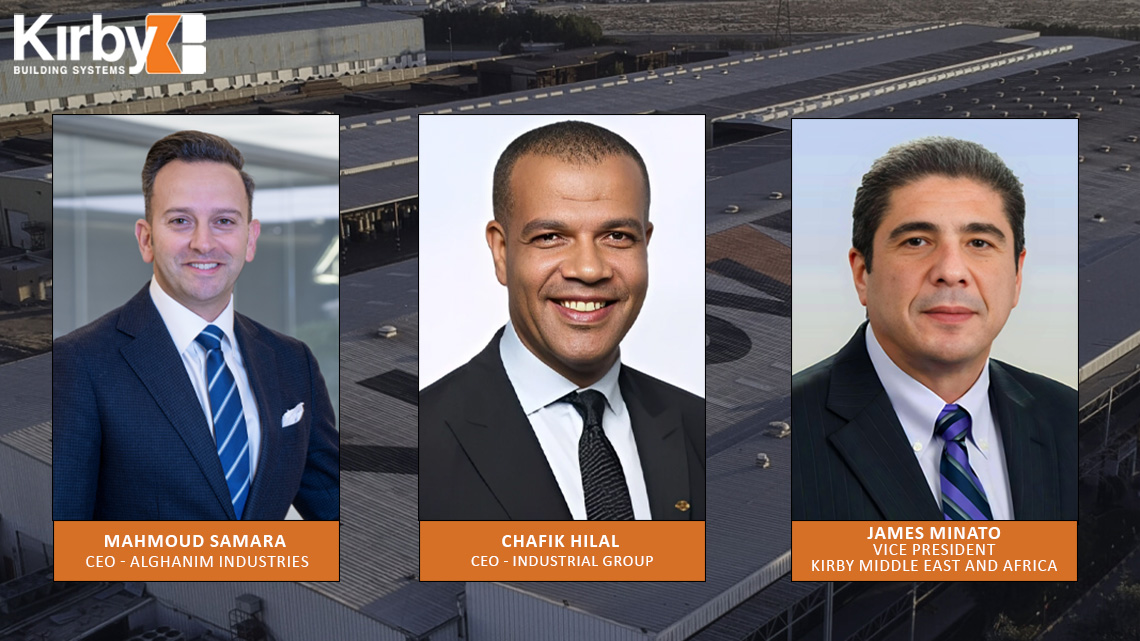
In the competitive landscape of modern business, true market leadership is defined by a company’s ability to not only innovate but also strategically disrupt an established industry. For Kirby Building Systems, that story began in 1976 with a bold decision to challenge the dominance of traditional concrete construction in the Middle East. This visionary move laid the foundation for Kirby’s global prominence, building a legacy of excellence that is as strong as the structures it creates.
A Pioneering Vision for a New Market
Kirby’s original strategy was simple yet transformative: to introduce pre-engineered steel buildings (PEBs) as a superior alternative to traditional construction methods. At a time when this technology was largely concentrated in North America and parts of Europe, the company recognized a clear opportunity to bridge a critical gap in the Middle Eastern market. “We weren’t just selling steel; we were offering a new paradigm of construction, one defined by speed, resilience, cost-effectiveness, and ease of installation,” says James Minato, Vice President of Kirby Middle East and Africa. “Our vision was to bring modern, environmentally friendly steel structures to a region dominated by traditional construction.”
This foresight not only opened new opportunities but also created an entirely new market and firmly established Kirby as a first mover with a lasting competitive edge.
Scaling with Precision: The Operational Playbook
Scaling a pioneering operation across diverse and complex geographies presented a formidable management challenge. Instead of viewing it as a logistical hurdle, Kirby approached it as a strategic opportunity to be addressed through disciplined systems. The company established a robust Kirby Standard Operating Procedure, supported by a centralized ERP system and a dedicated Operational Excellence team.
“The real challenge was not growth itself but creating lasting differentiation, earning customer trust, strengthening the brand, and building long-term customer loyalty,” explains Minato.
This rigorous focus on consistency and efficiency across its seven global manufacturing facilities became the cornerstone of its success, enabling the company to navigate market fluctuations and regulatory shifts without compromising its promise of quality. The use of internal benchmarking and KPI comparisons across plants ensures ongoing performance improvement and drives a culture of operational excellence.
The Engine of Innovation: R&D and Talent Strategy
At the heart of Kirby’s sustained leadership is a powerful engine of continuous innovation. The company’s strategic investment in a full-fledged Engineering Center of Excellence, along with a multi-functional R&D team, positions Kirby ahead of industry trends.
This commitment is evident in the development of groundbreaking products to address the evolution of steel structures from an industrial-focused sector into a versatile metal construction solution across commercial, community, infrastructure, aviation, and many other sectors. To support these advancements, the company has invested in cutting-edge design and detailing software and is preparing to roll out a state-of-the-art engineering system.
Leadership also emphasizes the pivotal role of people in driving this strategy. “At Kirby, people are at the heart of our strategy. We recruit and retain top talent, and importantly, all our front-line sales staff are qualified engineers,” Minato notes. “This combination of technical expertise and customer focus ensures that every interaction delivers real value”
A Defining Commitment to Sustainability and Safety
Beyond its products and operational models, Kirby’s commitment to environmental, health, and safety (EHS) stands as a defining strategic pillar. The company’s “Zero Harm, Zero Defect” ethos is an operational philosophy that integrates quality and safety into every aspect of its culture. This is reinforced by continuous investment in employee training through the EDIP methodology (Explain, Demonstrate, Imitate, and Practice), along with behavioral safety observations and management safety tours. This rigorous approach has been validated by Kirby’s long-standing ISO 45001 certification.
Kirby has also taken a leadership role in environmental stewardship by aligning its sustainability strategy with the United Nations Sustainable Development Goals (SDGs). Since 2019, the company has focused on four priority goals: Clean Energy, Industry Innovation and Infrastructure, Sustainable Cities and Communities, and Responsible Consumption and Production.
Its manufacturing processes are designed to minimize pollution, reduce carbon emissions, and utilize low-VOC paints, while its products play an important role in helping clients achieve LEED certification and drive sustainable construction practices.
Building the Future: Modular Construction and Evolving Demands
As the global demand for faster, greener, and more modular construction solutions accelerates, Kirby is well-positioned to lead the transformation. The PEB and steel construction industry is inherently modular, enabling buildings to be expanded, modified, or relocated with ease. Kirby is continuously exploring advanced technologies that enhance this modular approach, with an increasing focus on Light Gauge Structures to address evolving global needs.
The company’s journey stands as a masterclass in strategic leadership, uniting pioneering vision, customer centricity, operational excellence, relentless innovation, and an unwavering commitment to sustainability and safety.
